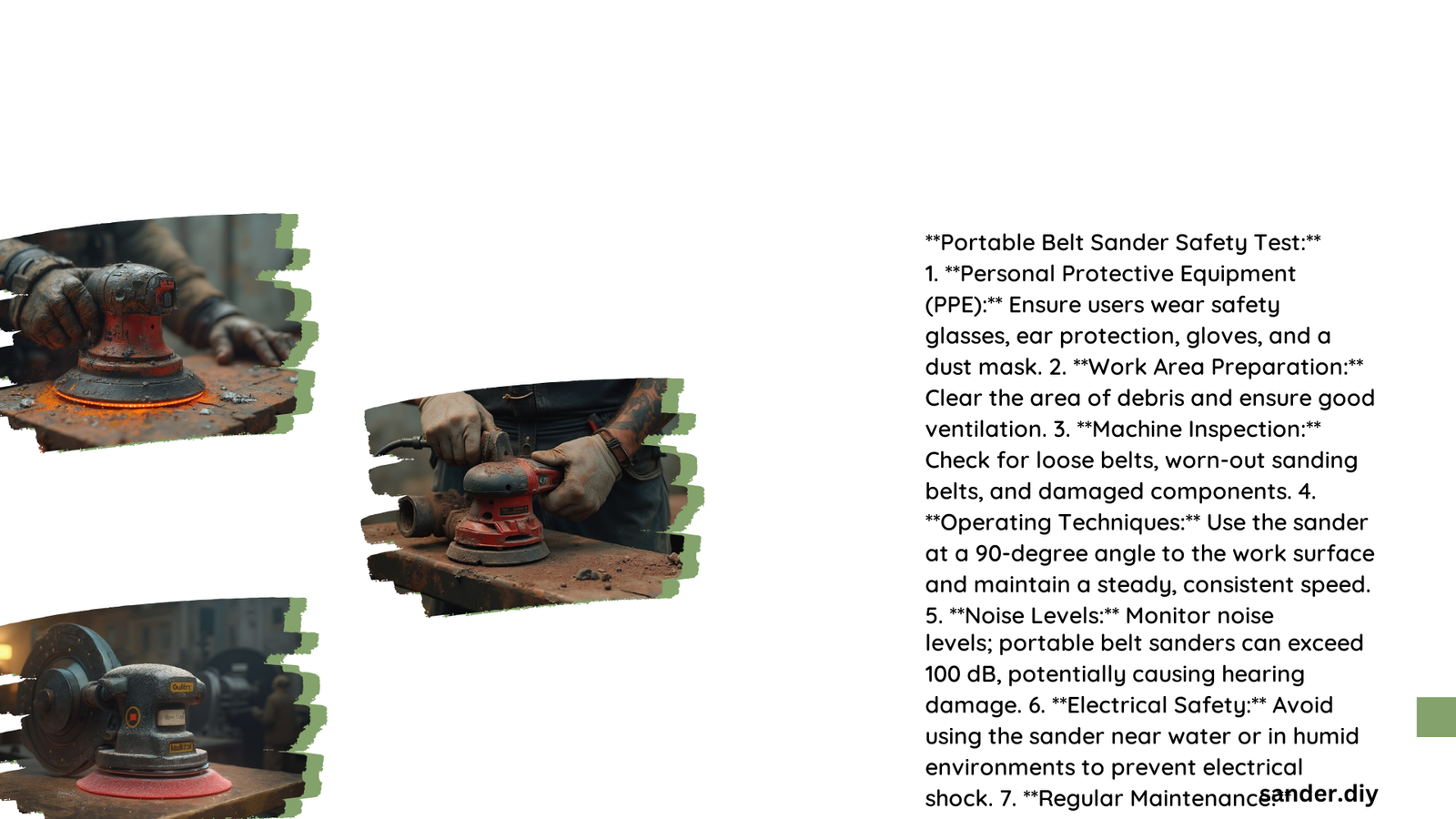A portable belt sander safety test is a critical procedure designed to evaluate and mitigate potential risks associated with power tool operation. This comprehensive assessment involves rigorous testing of vibration levels, electrical safety, mechanical integrity, and noise emissions to ensure compliance with international safety standards and protect operators from potential workplace hazards.
What Are the Core Components of a Portable Belt Sander Safety Test?
Why Conduct Comprehensive Safety Evaluations?
Safety tests for portable belt sanders are not merely procedural checkboxes but critical interventions that prevent workplace accidents. These evaluations systematically assess multiple dimensions of tool performance and potential risk factors.
Key Testing Parameters
| Parameter | Measurement Criteria | Acceptable Range |
|---|---|---|
| Vibration Levels | ISO 5349 Standard | < 2.5 m/s² |
| Noise Emission | OSHA Regulations | < 85 decibels |
| Electrical Safety | UL Standards | Zero Leakage |
| Mechanical Integrity | ISO Compliance | No Structural Weaknesses |
How to Prepare for a Portable Belt Sander Safety Test?
Essential Pre-Test Preparations
- Equipment Inspection
- Check electrical cord integrity
- Verify belt alignment and tension
- Examine guard mechanisms
-
Test power switch functionality
-
Personal Protective Equipment (PPE)
- Impact-resistant safety glasses
- Hearing protection
- Dust respirator
- Heavy-duty work gloves
- Steel-toed boots
What Specific Procedures Comprise a Safety Test?
Detailed Testing Methodology
Comprehensive safety tests involve multiple interconnected procedures:
- Electrical Safety Verification
- Measure current leakage
- Test ground wire continuity
- Validate insulation resistance
-
Check switch mechanism reliability
-
Mechanical Performance Assessment
- Evaluate belt tracking accuracy
- Test motor vibration levels
- Inspect belt tension mechanisms
- Assess overall structural integrity
What Are the Critical Safety Standards?
Regulatory Compliance Requirements
Portable belt sander safety tests must adhere to multiple international standards:
- OSHA Workplace Safety Regulations
- UL Electrical Safety Standards
- ISO Mechanical Performance Guidelines
- European Union Machine Directive Specifications
How to Interpret Safety Test Results?
Result Analysis Protocol
- Compare measured values against established standards
- Document any deviations or potential risks
- Recommend immediate corrective actions
- Determine tool’s continued usability
- Schedule follow-up comprehensive evaluation
What Are Common Failure Points?
Potential Risk Areas
- Electrical cord damage
- Belt misalignment
- Guard mechanism failure
- Excessive vibration
- Unexpected power fluctuations
Best Practices for Ongoing Safety Management
Continuous Monitoring Strategies
- Conduct quarterly comprehensive inspections
- Maintain detailed maintenance logs
- Train operators on risk identification
- Replace worn components proactively
- Implement strict usage guidelines
Technical Specifications for Safety Testing Equipment
Recommended Testing Instruments
- Vibration measurement accelerometers
- Decibel sound level meters
- Electrical multimeters
- Thermal imaging cameras
- Precision tension gauges
Conclusion

A portable belt sander safety test represents a critical investment in workplace protection, systematically evaluating potential risks and ensuring operator safety through comprehensive, standardized assessment protocols.
